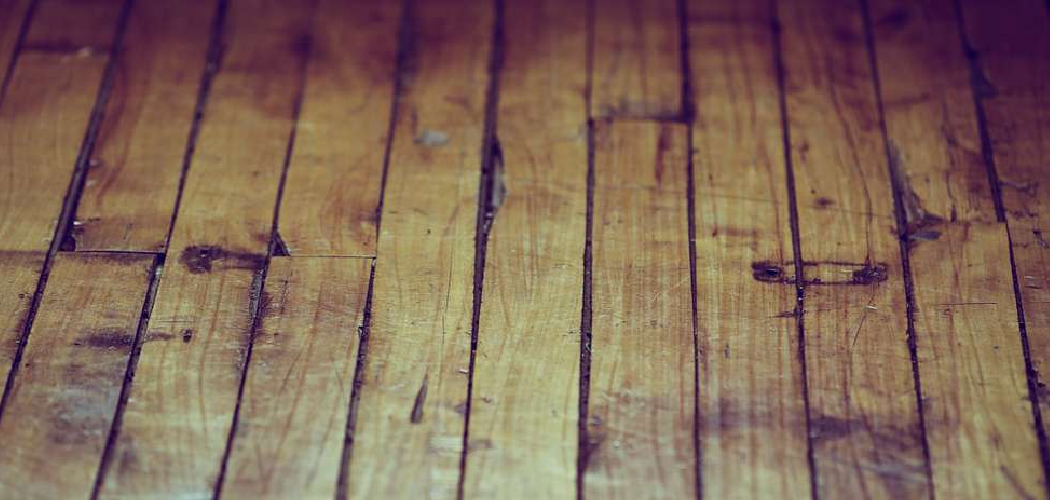When it comes to old houses, one of the most noticeable and charming features is original wood flooring. However, over time, these wood floors can become worn down or covered up with carpeting or other materials. If you’re lucky enough to have an old house with intact wood floors, it’s essential to know how to properly identify them in order to maintain their beauty and historical significance.
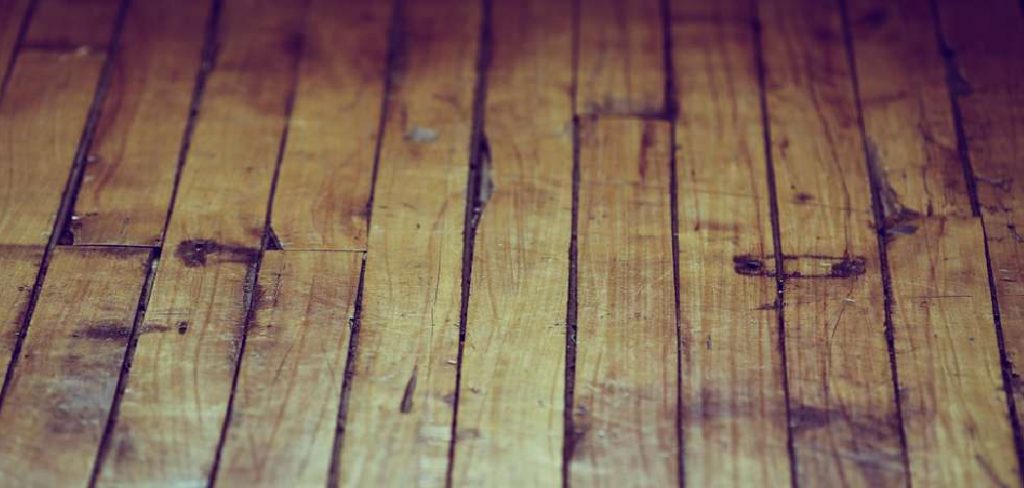
In this guide, we will discuss how to identify wood floors in old houses. We will cover the various types of wood flooring commonly found in older homes, as well as tips and tricks for determining their age and condition. Whether you’re a homeowner looking to restore your original wood floors or a potential buyer interested in historic homes, this guide is for you.
Necessary Items
Before we dive into identifying wood floors in old houses, it’s important to gather a few items that will come in handy during the process. These include:
- A Flashlight: This will help you get a better look at details on the floor, especially if it is dark or covered by other materials.
- A Magnifying Glass: Similar to a flashlight, this will help you see small details that may be difficult to spot with the naked eye.
- A Camera: You may want to take photos of the wood floors for reference or comparison later on.
- A Tape Measure: This will come in handy when determining the size and spacing of floorboards.
- A Notepad and Pen: It’s always helpful to take notes during the identification process to keep track of important details.
Types of Wood Flooring in Old Houses
There are several types of wood flooring commonly found in old houses. These include:
1) Plank Flooring
This type of flooring consists of long, wide boards that are typically 4-12 inches in width. These boards are often hand-sawn and may be rough or uneven in texture. Plank flooring was commonly used in early American homes, dating back to the 17th century.
2) Strip Flooring
Similar to plank flooring, strip flooring is made up of narrow boards that are 2-4 inches in width. Unlike plank flooring, strip flooring is typically milled and has a smoother, more uniform appearance. This type of flooring became popular in the mid to late 19th century.
3) Parquet Flooring
Parquet flooring consists of small wood pieces arranged in geometric patterns or designs. It was commonly used in high-end homes and buildings during the late 19th and early 20th centuries. Parquet flooring often requires special care and maintenance due to its intricate design.
4) Tongue-and-Groove Flooring
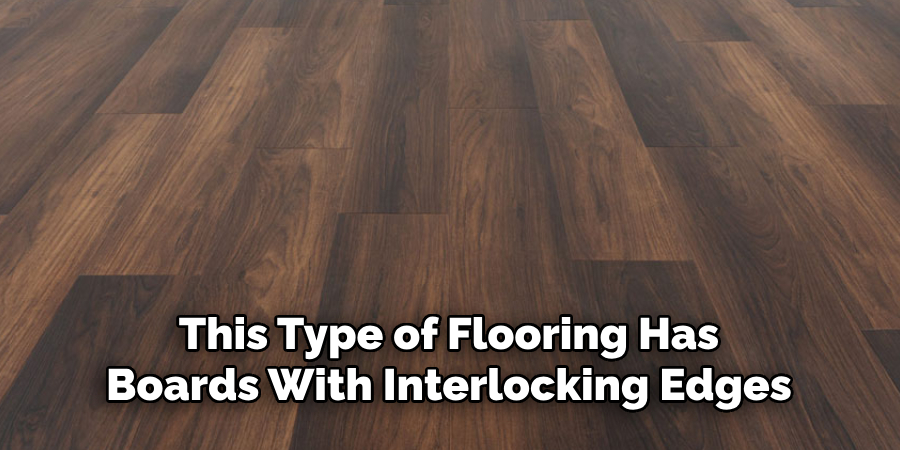
This type of flooring has boards with interlocking edges, making them easy to install and secure. It was commonly used in homes built between World War I and World War II and in post-war homes.
8 Things to Know Before You Start
1. Understand the Age of Your House
Knowing the approximate age of your house can help determine the type of wood flooring that may have been used. Homes built before 1850 are more likely to have plank or hand-sawn flooring, while homes built in the early to mid-20th century may have tongue-and-groove or parquet flooring.
2. Look for Original Flooring Features
If your house has been remodeled, it may be difficult to determine the original flooring. However, look for areas where the floorboards may have been cut or altered to fit around doorways or other features. These can serve as clues to the original flooring.
3. Check for Exposed Nails
In older homes, nails were often used to secure wood floors instead of the modern method of glue or adhesives. Look for exposed nail heads along the edges or between floorboards, as this can indicate an original wood floor.
4. Consider the Width and Length of Floorboards
As mentioned earlier, plank flooring tends to have wider boards, while strip flooring has narrower boards. Additionally, older homes may have longer floorboards due to the use of larger trees and hand-sawing techniques.
5. Look for Signs of Wear
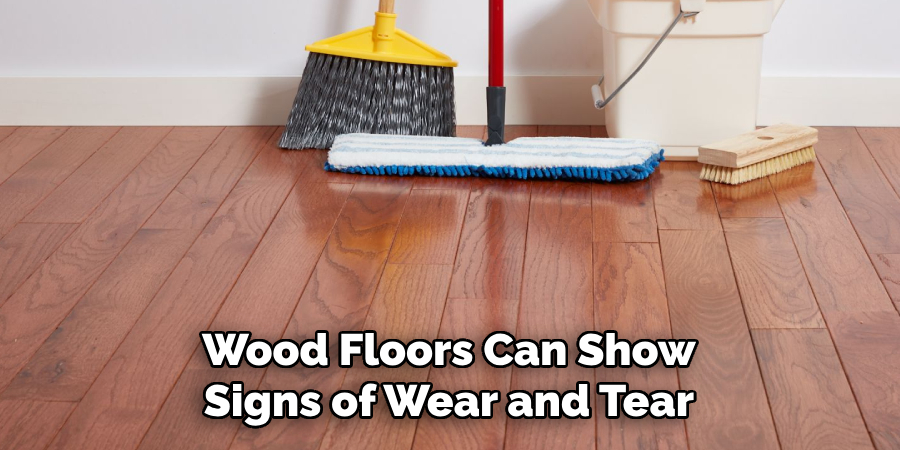
Over time, wood floors can show signs of wear and tear, such as scratches, dents, or discoloration. These can give clues about the age and condition of the floor. However, it’s important to note that some wear may have been caused by previous owners or their pets.
6. Research Local Building Materials
Different regions may have used different types of wood for flooring depending on what was locally available. Researching the common building materials in your area can give you a better idea of what type of wood flooring may have been used in your old house.
7. Seek Professional Help
If you’re unsure about the type or condition of your wood floors, it’s always best to seek professional help from a contractor or flooring specialist. They will have the knowledge and expertise to identify and assess your wood floors properly.
8. Handle with Care
When inspecting or cleaning your wood floors, be sure to handle them with care and avoid using harsh chemicals or excessive water, which can damage the wood. If you’re looking to restore your old wood floors, it’s best to consult a professional for advice on proper cleaning and maintenance techniques.
As you can see, identifying wood floors in old houses requires some knowledge and careful inspection. By gathering the necessary items, understanding different types of wood flooring, and keeping these tips in mind, you’ll be able to properly identify and maintain the beauty of your historic wood floors. So, whether you’re a homeowner or a history enthusiast, let this guide be your go-to resource for all things related to wooden floors in old houses.
10 Steps on How to Identify Wood Floors in Old Houses
Step 1: Gather Necessary Items
Before you begin, make sure you have a flashlight, magnifying glass, camera, tape measure, notepad, and pen on hand. These will come in handy during the identification process. If you don’t have these items, make a quick trip to the store before starting.
Step 2: Determine the Age of Your House
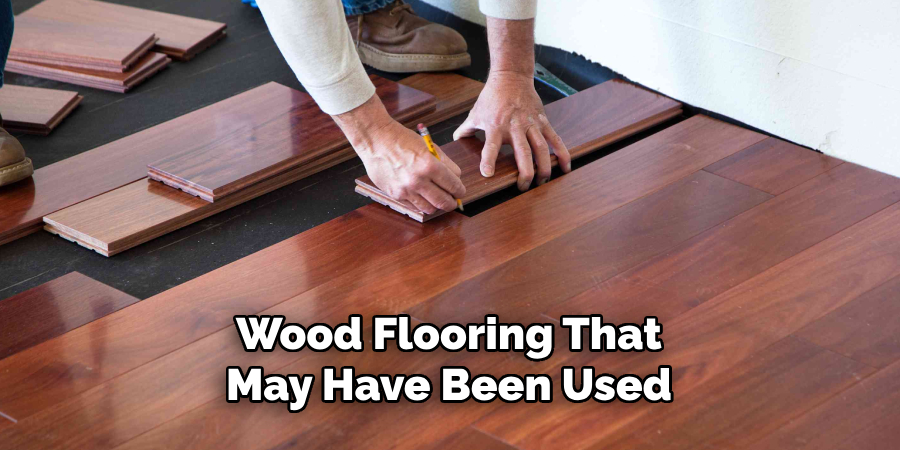
Knowing the approximate age of your house can help narrow down the types of wood flooring that may have been used. Older homes are more likely to have plank or hand-sawn flooring, while newer homes may have tongue-and-groove or parquet flooring.
Step 3: Look for Original Flooring Features
If your house has been remodeled, it may be difficult to determine the original flooring. However, look for areas where the floorboards may have been cut or altered to fit around doorways or other features. These can serve as clues to the original flooring.
Step 4: Check for Exposed Nails
In older homes, nails were often used to secure wood floors instead of the modern method of glue or adhesives. Look for exposed nail heads along the edges or in between floorboards, as this can indicate an original wood floor.
Step 5: Consider the Width and Length of Floorboards
As mentioned earlier, plank flooring tends to have wider boards, while strip flooring has narrower boards. Additionally, older homes may have longer floorboards due to the use of larger trees and hand-sawing techniques.
Step 6: Look for Signs of Wear
Over time, wood floors can show signs of wear and tear, such as scratches, dents, or discoloration. These can give clues about the age and condition of the floor. However, it’s important to note that previous owners or their pets may have caused some wear.
Step 7: Research Local Building Materials
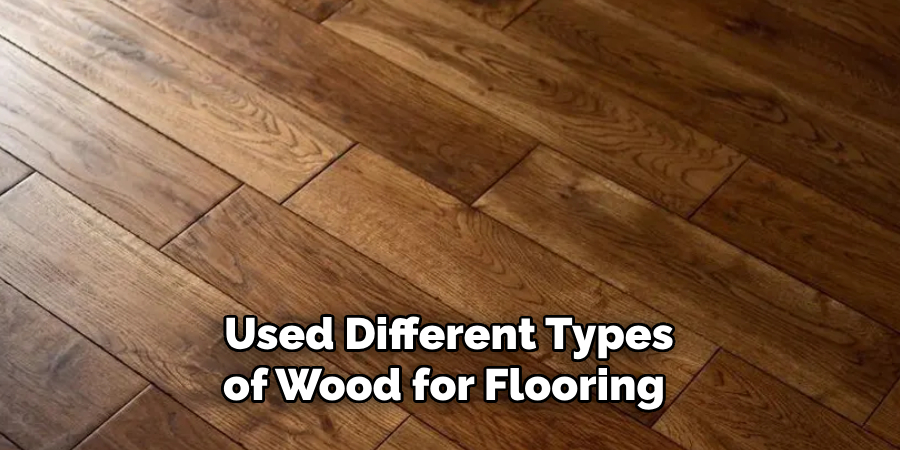
Different regions may have used different types of wood for flooring depending on what was locally available. Researching the common building materials in your area can give you a better idea of what type of wood flooring may have been used in your old house.
Step 8: Seek Professional Help
If you’re unsure about the type or condition of your wood floors, it’s always best to seek professional help from a contractor or flooring specialist. They will have the knowledge and expertise to identify and assess your wood floors properly.
Step 9: Handle with Care
When inspecting or cleaning your wood floors, be sure to handle them with care and avoid using harsh chemicals or excessive water, which can damage the wood. If you’re looking to restore your old wood floors, it’s best to consult a professional for advice on proper cleaning and maintenance techniques.
Step 10: Preserve the Beauty of Your Historic Wood Floors
Once you have identified your wood floors and determined their condition, it’s important to maintain them to preserve their beauty properly. Regular cleaning and maintenance, along with seeking professional help when needed, can help keep your historic wood floors in top shape for years to come. So be sure to handle them with care and enjoy the natural charm of your old house’s wood flooring!
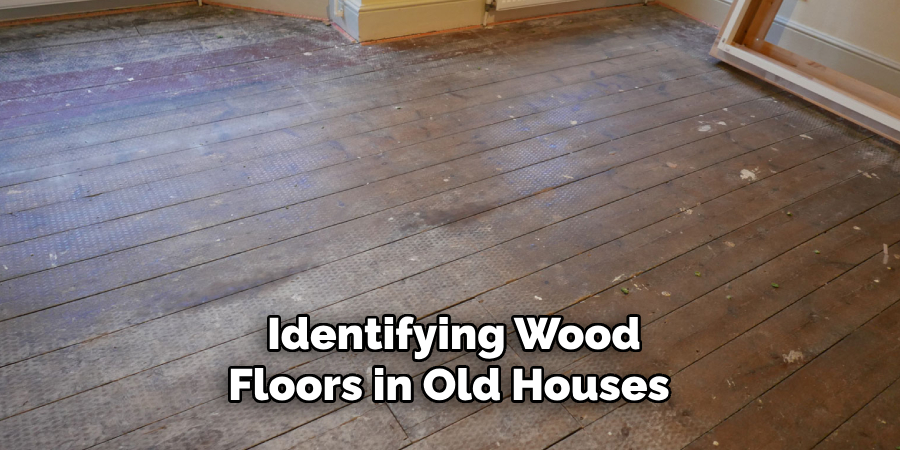
As you can see, identifying wood floors in old houses requires some knowledge and careful inspection. By following these ten steps on how to identify wood floors in old houses and keeping these tips in mind, you’ll be able to properly identify and maintain the beauty of your historic wood floors.
So, whether you’re a homeowner or a history enthusiast, let this guide be your go-to resource for all things related to wooden floors in old houses. So be sure to handle them with care and enjoy the natural charm of your old house’s wood flooring! In addition, don’t forget to seek professional help when needed and preserve the beauty of your historic wood floors for future generations to appreciate.
8 Things to Avoid when Identifying Wood Floors in Old Houses
1. Assuming All Wood Floors are the Same
There are many different types of wood flooring that have been used throughout history. Don’t make the mistake of assuming all wood floors are the same, as this can lead to misidentification and improper maintenance.
2. Using Harsh Chemicals or Excessive Water
When cleaning your wood floors, avoid using harsh chemicals or excessive water. These can damage the wood and cause warping, which can be expensive to repair. If you’re unsure about proper cleaning techniques, seek professional advice.
3. Neglecting Regular Maintenance
Proper maintenance is key to preserving the beauty and longevity of your wood floors. Neglecting regular maintenance can lead to costly repairs or even replacement in extreme cases. While wood floors may require more care than other flooring materials, the natural charm they bring to a historic home is worth it.
4. Not Consulting a Professional
If you need clarification on the type or condition of your wood floors, feel free to consult a professional for help. Their expertise can save you time and money in the long run by properly identifying any issues and providing guidance on proper maintenance and restoration techniques.
5. Ignoring Signs of Wear and Tear
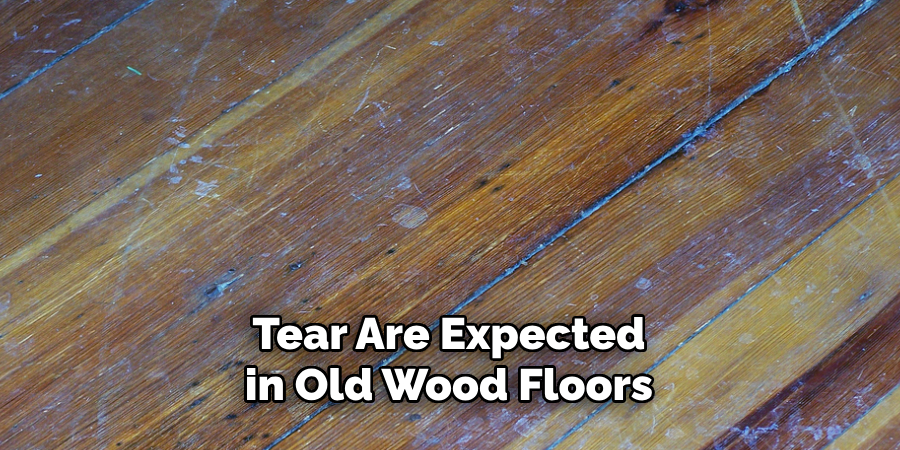
While some signs of wear and tear are expected in old wood floors, ignoring them can lead to further damage. It’s important to address any scratches, dents, or discoloration before they become more severe.
6. Forgetting the Importance of Local Building Materials
As mentioned earlier, different regions may have used different types of wood for flooring depending on what was locally available. Remember to research the common building materials in your area when trying to identify wood floors in old houses.
7. Not Handling Floors with Care
Wood floors can be delicate and should be handled with care. Avoid using heavy furniture or dragging items across the floor, as this can cause scratches and dents. It’s also important to avoid wearing high heels or stiletto shoes on wood floors.
8. Overlooking Changes or Alterations
As with any historic feature in an old house, it’s important to pay attention to changes or alterations that may have been made over time. These can affect the appearance and condition of wood floors and should be noted when identifying and maintaining them.
So remember to avoid these common mistakes and use our guide as a helpful resource for properly identifying and caring for wood floors in old houses. Happy preserving! As always, handle them with care and enjoy the natural charm of your old house’s wood flooring for years to come.
Frequently Asked Questions about Identifying Wood Floors in Old Houses
Can I Identify the Type of Wood Used in My Old House’s Flooring Just by Looking at It?
It may be challenging to determine the type of wood used in your old house’s flooring just by sight. Consulting a professional or doing research on local building materials can help give you a better idea.
How Can I Tell If My Wood Floors Need to Be Refinished?
Signs that your wood floors may need to be refinished include deep scratches, dents, or discoloration. However, it’s essential to consult a professional for proper assessment and advice before attempting any refinishing yourself.
Is It Necessary to Seek Professional Help When Identifying Wood Floors in Old Houses?
While you may be able to identify some types of wood flooring on your own, seeking professional help can ensure proper identification and maintenance techniques. This can save you time and money in the long run. So, if you’re unsure or have any doubts, it’s best to consult a professional for assistance.
Are Wood Floors in Old Houses More Difficult to Car for Compared to Modern Wood Floors?
Wood floors in old houses may require more care and maintenance compared to modern wood floors due to their age and potential wear and tear. However, the natural charm and character they bring to a historic home is worth it. Just be sure to handle them with care and seek professional help when needed. Always remember that proper maintenance is critical in preserving the beauty and longevity of wood floors in old houses.
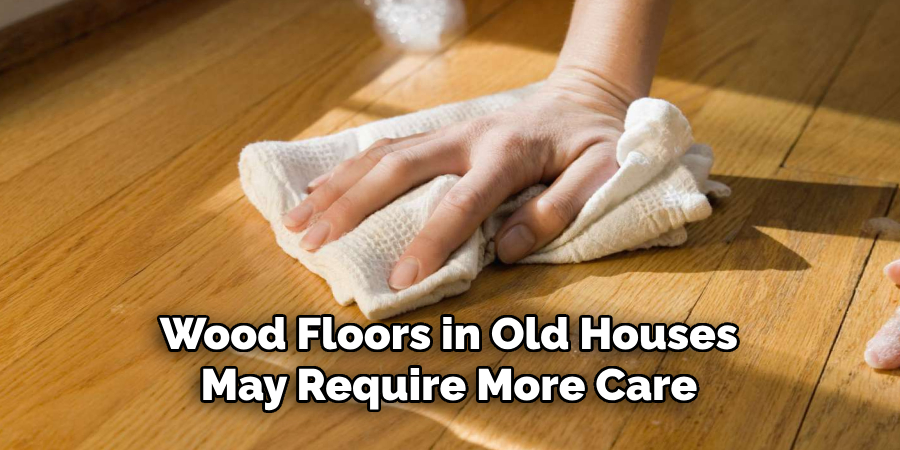
Can I Use Any Type of Cleaner on My Wood Floors?
No, it’s important to use cleaners specifically designed for wood floors and avoid harsh chemicals or excessive water. If you’re unsure about proper cleaning techniques, seek professional advice. So always check labels and do research before using any cleaner on your wood floors to avoid causing damage.
Keep these FAQs in mind when identifying and caring for wood floors in old houses. With proper attention and maintenance, these historic features can continue to add beauty and character to your home for years to come.
Conclusion
Wood floors in old houses are not only a beautiful feature but also a valuable piece of history. It is a unique and beautiful feature that requires proper identification and care to maintain its natural charm.
It’s essential to correctly identify and support them to preserve their natural charm for future generations to appreciate. By avoiding common mistakes and seeking professional help, you can ensure the longevity of your wood floors and continue to enjoy their unique character in your home.
Remember to handle them carefully and stay knowledgeable about the type of wood used, proper cleaning techniques, and any changes or alterations that may have been made over time. With these tips on how to identify wood floors in old houses and a little TLC, your wood floors can last for many years to come.
So don’t neglect your historic wood floors – they’re worth it! Ad the love for these historic treasures! Remember to handle them carefully and prioritize regular maintenance to preserve the beauty of your historic home’s wood floors.
